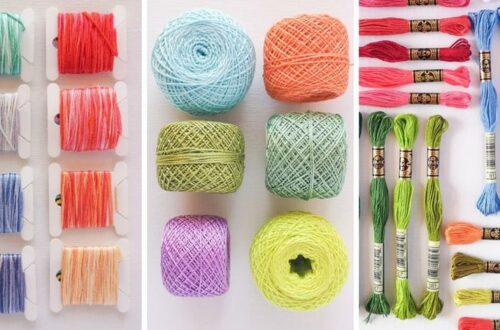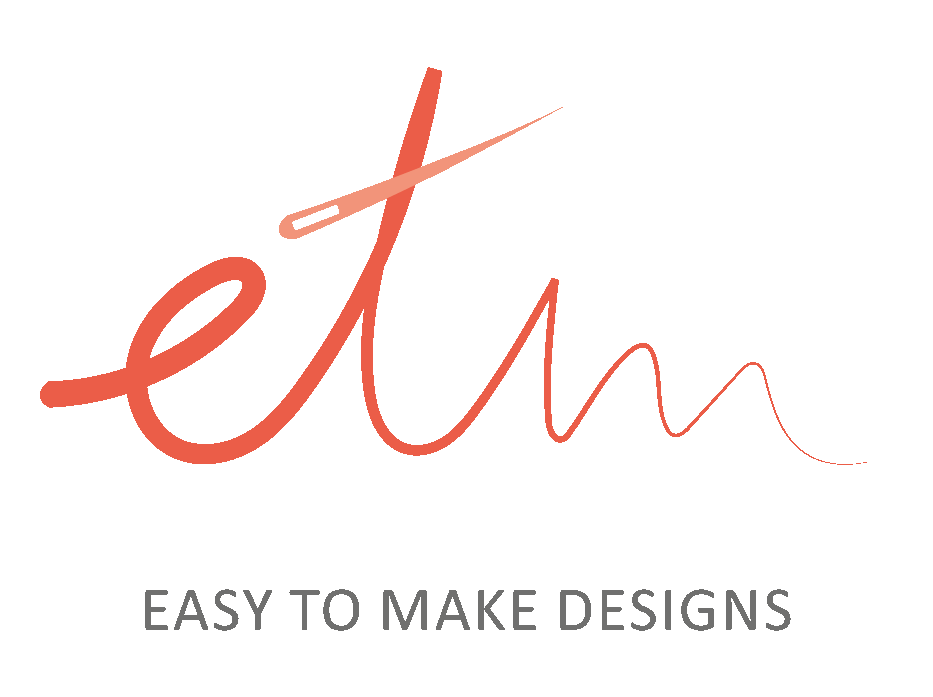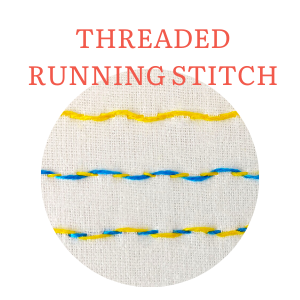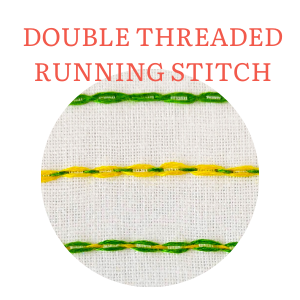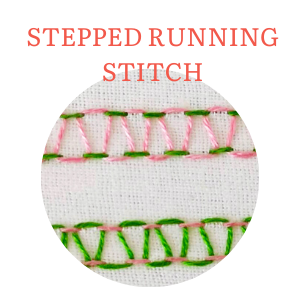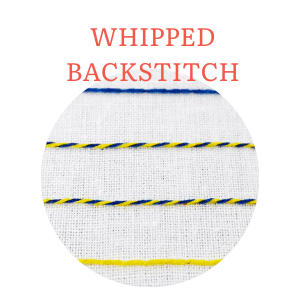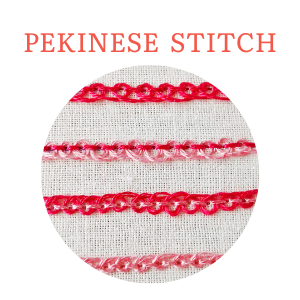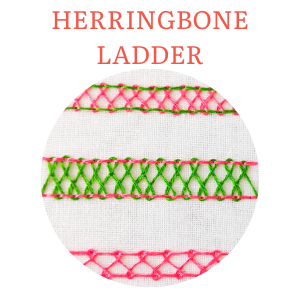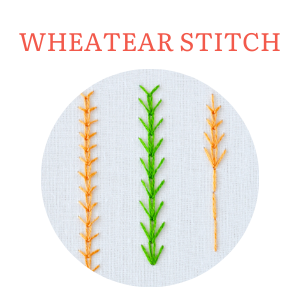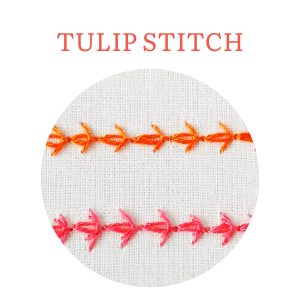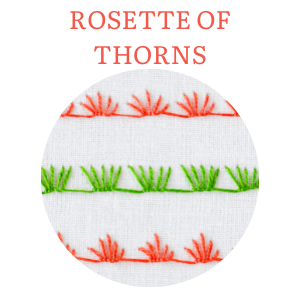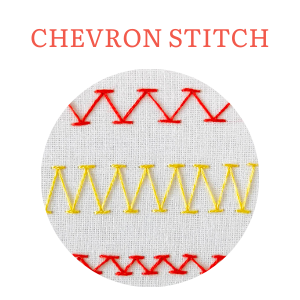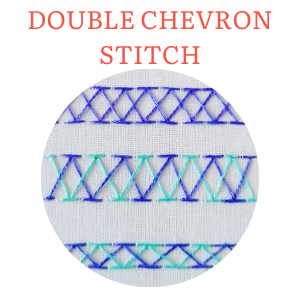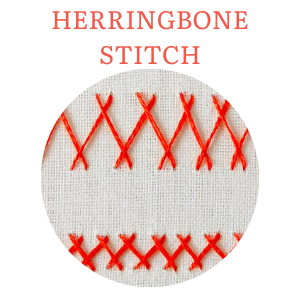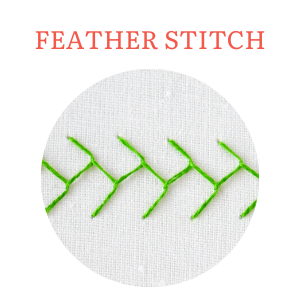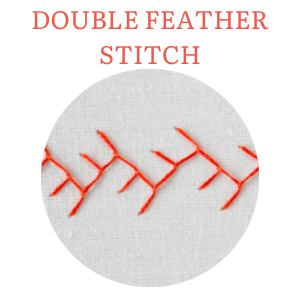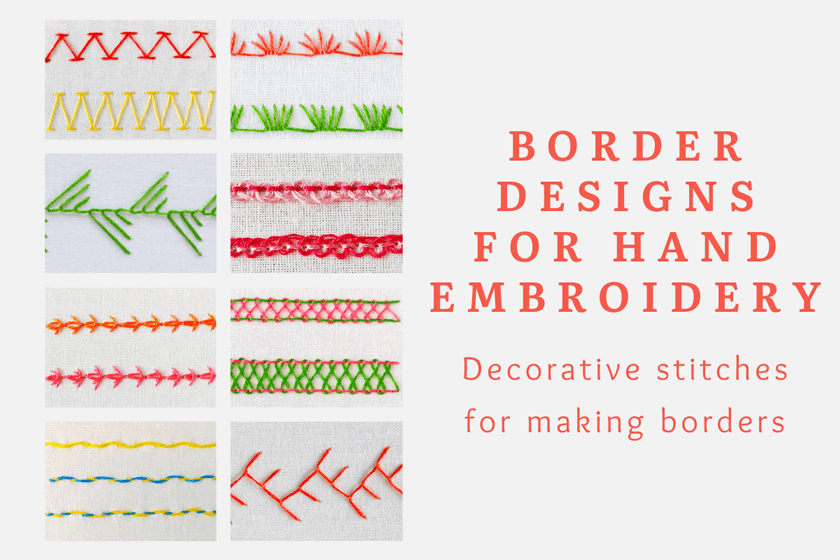
Border designs for hand embroidery
Decorative stitches for making borders
There are many types of hand embroidery stitches that we use in modern embroidery. Some are best for outlines, some for filling, some for lettering, and some – for border designs.
The border design is a pattern that runs lengthwise along the edge of the fabric or a garment. Usually, we use border designs to decorate clothes and tableware. It is common to use border designs in quilting too.
In this article, I listed hand embroidery stitches that you can choose from for creating beautiful border designs. Each link in this blog post will lead you to a detailed description of the stitch and a video tutorial, where I demonstrate how to embroider that stitch.
Best hand embroidery stitches for border designs
Threaded running stitch
Threaded running stitch is a hand embroidery stitch that combines the foundation stitch (running stitch) and threading.
After you embroider the running stitch, lace the second thread through the running stitches without entering the fabric or crossing the running stitch.
You can embroider the threaded running stitch in a single color to create a wavy line or choose two contrasting colors to create exciting patterns.
Play with colors and see what beautiful color combinations you can create with this simple stitch!
Read more and watch a video tutorial of a threaded running stitch HERE.
Double threaded running stitch
A double-threaded running stitch is a hand embroidery stitch made combining the foundation stitch (running stitch) and threading.
After you embroider the running stitch, lace the second thread through the running stitches without entering the fabric or crossing the running stitch. This lacing is made two times to form a chain-like pattern.
You can embroider the threaded running stitch in a single color to create a single color chain or choose two contrasting colors to create exciting patterns.
Read more and watch a video tutorial of a double-threaded running stitch HERE.
Stepped running stitch
A stepped running stitch is a hand embroidery stitch made combining the foundation stitch (running stitch) and threading.
After you embroider two parallel lines of the running stitch, lace the thread through the running stitches without entering the fabric or crossing the running stitch. This threading, made in precise order, creates a decorative stitch that is perfect for decorative borders.
You can embroider the stepped running stitch in a single color to create a single color design or choose two contrasting colors to create exciting patterns.
Read more and watch a video tutorial of stepped running stitch HERE.
Whipped backstitch
A whipped backstitch is an embroidery stitch made in two steps. First, we embroider a simple backstitch and then whip it with another thread. You can use the same color thread to make a straight raised line or two contrasting colors to create a rope-like line.
Read more and watch a video tutorial of whipped backstitch stitch HERE.
Pekinese stitch
Pekinese stitch has a lot of different names. It is also called Pekinese backstitch, Chinese stitch, blind knot, interlaced backstitch, and even forbidden stitch.
This decorative stitch is made of two combined stitches – the backstitch and decorative looping.
First, embroider the backstitch and then, lace it forming the loops. You can embroider this stitch in one color or two different colors. That will create diverse decorative effects.
You can also change up the size of the loops – make them small or big, and the size of the backstitch. If the backstitches are small – the looping will be dense and opposite – a bigger backstitch will create wider gaps between the loops.
Read more and watch a video tutorial of Pekinese stitch HERE.
Herringbone ladder
A herringbone ladder stitch is a hand embroidery stitch made combining the foundation stitch (backstitch stitch) and threading.
After you embroider two parallel backstitch lines, loop the thread through the backstitches without entering the fabric or crossing the backstitch. This threading, made in precise order, creates a decorative stitch that is perfect for decorative borders.
You can embroider the herringbone ladder stitch in a single color to create a single color design or choose two contrasting colors to create exciting patterns.
The distance between two parallel lines of the backstitches and the stitches’ size will define how dense the stitch will be.
Read more and watch a video tutorial of herringbone ladder stitch HERE.
Wheatear stitch
A Wheatear stitch is a variation of chain stitch.
This simple stitch is excellent for borders and decorating the seams. It works well on straight and curved lines.
Also, wheatear stitch is widely used in floral embroideries for its shape that resembles wheat.
Read more and watch a video tutorial of Wheatear stitch HERE.
Tulip stitch
Tulip stitch is a detached chain stitch with extra detail – slipped decorative stitch.
This stitch is very versatile. You can embroider it as a single detached stitch or in horizontal or vertical straight lines. Use this stitch for borders, to decorate the seams, or as an accent stitch. It will look great in floral design to create small tulip flowers.
Also, you can play with colors embroidering this stitch. Make it in a single color or add more colors (for slipped stitches) if you like!
Read more and watch a video tutorial of tulip stitch HERE.
Rosette of thorns
A rosette of thorns stitch is a variation of the blanket stitch.
Blanket stitches are grouped into sets of five stitches. Depending on the design, they can create a wavy or triangular line.
A rosette of thors stitch looks excellent in border designs. Also, you can use it as a decorative stitch on the seams. It can be combined with other decorative stitches, like French knots or lazy daisies, to create unique embroidery designs.
Read more and watch a video tutorial of a rosette of thorns stitch HERE.
Chevron stitch
A chevron stitch is a zig-zag-shaped stitch done between two parallel lines. The lines can be straight and also curved.
Tiny horizontal straight stitches are connected with diagonal lines to make this beautiful stitch. You can use this stitch as an outline stitch, border stitch, or filling stitch. It can be combined with other decorative stitches, like French knots or lazy daisies, to create unique embroidery designs.
The distance between parallel lines and the diagonal stitches’ angle will define the stitches’ size and density.
Read more and watch a video tutorial of a chevron stitch HERE.
Double chevron stitch
A double chevron stitch is a composite stitch made from two zig-zag-shaped chevron stitches embroidered between two parallel lines, one above the other.
Two lines of the chevron stitch are made on the same line, one above the other. One stitch has a starting point at the bottom line and the other – at the top.
You can embroider double Chevron stitch in one color or two contrasting colors. Use this stitch as an outline stitch, border stitch, or filling stitch.
The distance between parallel lines and the diagonal stitches’ angle will define the stitches’ size and density.
Read more and watch a video tutorial of a double chevron stitch HERE.
Herringbone stitch
The herringbone stitch, also called mossoul stitch, is a decorative hand embroidery stitch made between two parallel lines. Diagonal stitches of herringbone stitch create a beautiful crossed pattern.
This hand embroidery stitch is used for borders and to decorate the edges. You can add other stitches, like lazy daisies or french knots, to the herringbone stitch and create beautiful border designs.
Read more and watch a video tutorial of a herringbone stitch HERE.
Feather stitch
A feather stitch is a series of V-shaped stitches connected between them. This simple stitch is excellent to decorate the seams and for borders. You can easily combine a feather stitch with other decorative stitches, like French knots of Lazy daisies, to create your unique border designs. Also, this stitch is very handy in floral embroidery. Use it for branches, twigs, or vines.
If you want to use feather stitch for filling – make rows of this stitch one next to the other and fill the fabric with beautiful texture.
Read more and watch a video tutorial of a feather stitch HERE.
Double feather stitch
A double feather stitch is a variation of a simple feather stitch. It is a series of V-shaped stitches connected between them in a zig-zag shape line.
The double feather stitch is excellent for decorating the seams and for borders. You can combine a double feather stitch with other decorative stitches, like French knots of Lazy daisies, to create your unique border designs. Also, this stitch is widely used in floral embroidery – for branches, twigs, or vines. If you want to use a double feather stitch for filling – make rows of this stitch, one next to the other and fill the fabric with beautiful texture.
Read more and watch a video tutorial of a double feather stitch HERE.
Maidenhair stitch
A maidenhair stitch is a variation of a single feather stitch.
The maidenhair stitch is perfect for decorating the seams and for borders. Add some decorative stitches, like French knots of Lazy daisies, and create your unique border designs.
Also, the maidenhair stitch looks excellent in filling. Make rows of this stitch, one next to the other, and fill the fabric with beautiful texture.
Read more and watch a video tutorial of a double feather stitch HERE.
Did you find a stitch you were looking for?
If not, you may be interested in reading these articles:
- The top 10 hand embroidery stitches you should learn
- Hand embroidery Filling stitches – part 1
- Hand embroidery Filling stitches – part 2
- Best embroidery stitches for outlines
Also, you can check out my Blog’s tab Video tutorials. You will find an alphabetic list of all the hand embroidery stitches I ever wrote about there.
I add new video tutorials to my channel every week. To get notified when a new video goes live, subscribe to my YouTube channel and click on the bell right beside the button.
Or sign up for my newsletter and be the first to know when I release a new hand embroidery video, DIY tutorial, or blog post!
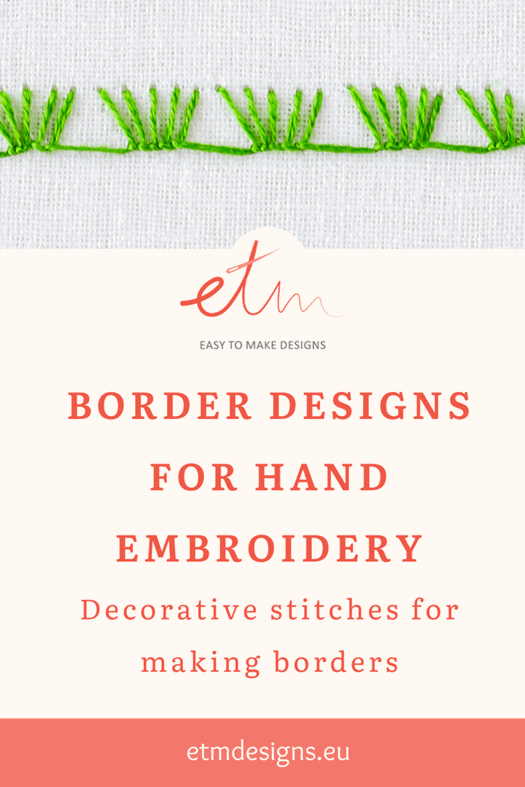


You May Also Like
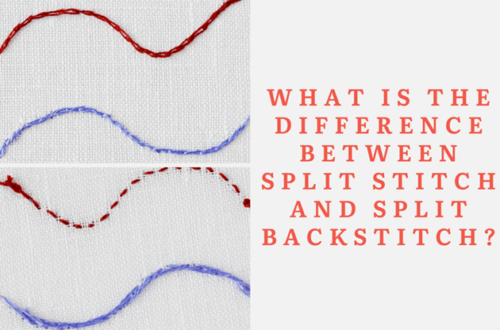
What is the difference between Split stitch and Split Backstitch?
27 May 2021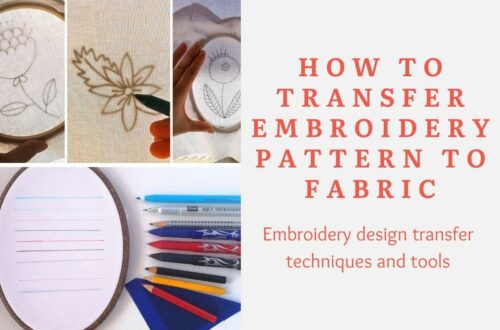
How to transfer embroidery pattern to fabric. Embroidery design transfer techniques and tools
14 September 2020